The last Nazi hunter: 'I'm the only Jew in the world who prays for the good health of Nazis'
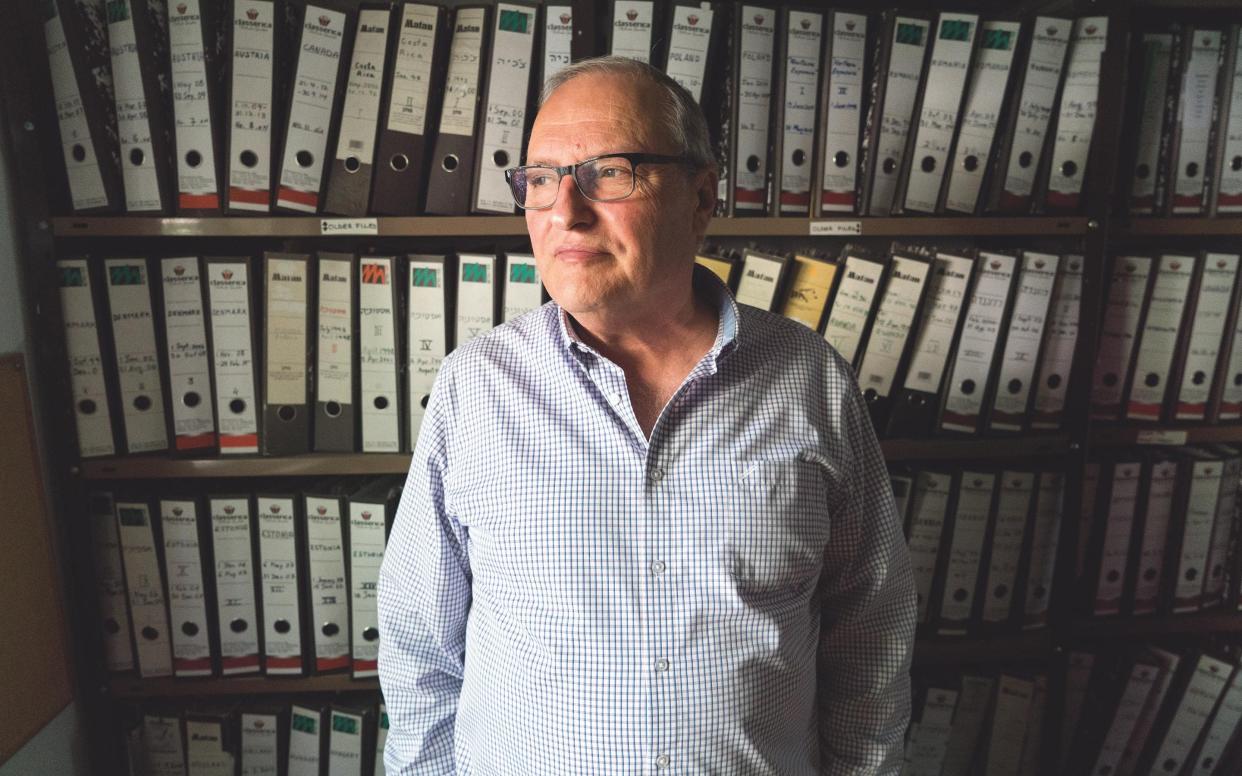
CORRECTION: An earlier version of this piece contained an image captioned as Erna Wallisch, a guard at Majdanek concentration camp. It was in fact an image of Violette Szabo, the SOE agent who was awarded a posthumous George Cross for her wartime gallantry. We apologise unreservedly for this error.
Late September 2020, and a disturbing post on Facebook: ‘Working very hard on an investigation concerning the particularly brutal murder of Jewish babies in the Lithuanian town of Raseiniai in 1941,’ writes Efraim Zuroff. ‘A young female “student” smashed their heads with a large boulder… Anyone from Raseiniai or with contacts with people who were alive at that time, please contact me. This request is URGENT!!!!’
Not the typical post, but he’s not your typical poster, either. Zuroff, 72, is a director of the Simon Wiesenthal Center (Israel Office and Eastern European Affairs). He is widely known as the ‘last Nazi hunter’. Of his swashbuckling nickname, Zuroff says, ‘You know, I’m not exactly doing ambushes in the jungles of South America, here. I’m one third detective, one third historian, one third political lobbyist.’ Yet the moniker is accurate. In 42 years, Zuroff has submitted the names of more than 3,000 suspected Nazi war criminals to 20 countries. In 40 cases, legal action was taken against a Holocaust perpetrator.
Nine years ago, Zuroff relaunched Operation Last Chance, a campaign to find the remaining Nazi war criminals. He works in Jerusalem with just an office manager and a part-time researcher. The organisation is mostly funded by private donations. And with the hunt for living Nazis ‘in injury time’ – an 18-year-old in 1939 would be 99 now – Zuroff employs social media to track his prey. Proud of his 8,000-plus Twitter followers, he uses modern methods to solve historical crimes.
The pursuit of ‘Student K’ – Zuroff doesn’t want to reveal her name, in case it alerts her, ‘and the fake witnesses start coming out’ – started in 1989, when he came across the testimonies of dozens of Lithuanian survivors. He identified 1,284 potential war criminals.
The 'she-devil of the women’s camp': Erna Wallisch
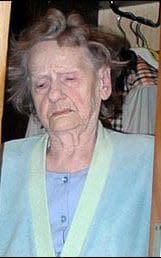
Died before he faced trial: Anton Gecas
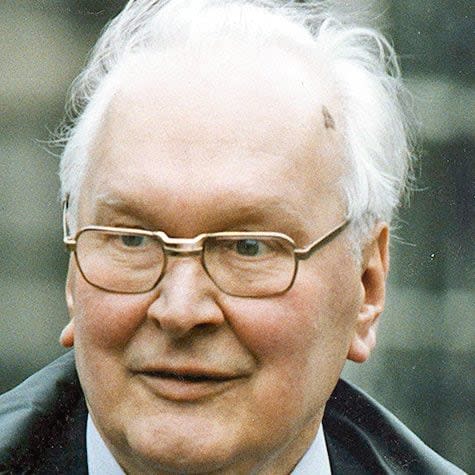
Lithuania had one of the worst reputations for Jewish murders in the Second World War. Out of a population of 220,000 Jews, just 8,000 survived. Einsatzgruppen, or mobile death squads, accompanied the Baltic invasions of June 1941, but according to Zuroff, there were only 1,000 Germans present during the occupation of Lithuania, with the majority of the horrors perpetrated by ‘willing local collaborators’.
In the German-occupied countries of Western Europe, Nazi collaboration usually meant identifying, informing on and preparing people to be deported to the East – to the ghettos and the gas chambers, as represented in films like Schindler’s List. If possible, the Baltic story is even more gruesome. ‘The Lithuanians didn’t put people on trains,’ says Zuroff. ‘They got their hands dirty. They personally killed their Jewish neighbours, usually by shooting them and throwing them, one on top of each other, into pits dug in the forest.’
Ninety per cent of victims were killed near their homes. ‘This was no easy feat to organise,’ says Zuroff. ‘The local populations happily supplied the manpower.’ The majority of perpetrators got away in the confusion at the end of the war, many to English-speaking countries, as refugees escaping the Russians.
One Jewish survivor of the summer of 1941 was Dina Flum, who ran away during a massacre. ‘While I was hiding in the hay, I saw very clearly two women at the pit murdering Jewish babies by smashing their heads with a rock,’ she testified. ‘One of them was the student, [K].’ The other was not identified.
Many Baltic war criminals fled to Canada, where Zuroff recently resumed the chase. Sick of local authorities prevaricating, he teamed up with a Canadian associate who followed up leads on two immigrant sisters called ‘K’. In 1941, they would have been aged 16 and 18. The ‘K’ represents a common Lithuanian surname, so their guilt is not obvious. Only the older sister can be traced, but Zuroff needs to find the perpetrator’s Christian name to make the connection.
Found guilty for crimes against humanity: Dinko Sakic
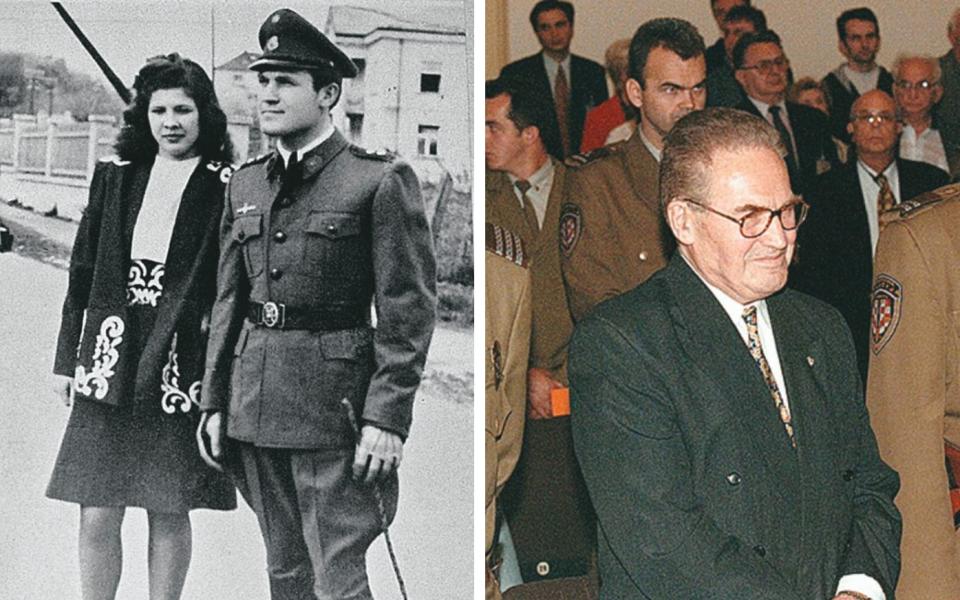
Suspended sentence in 2020: Bruno Dey
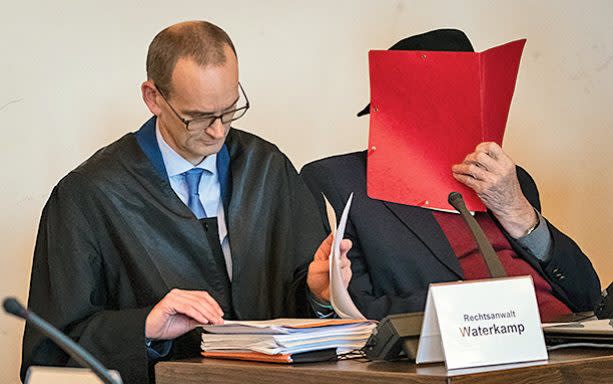
During our interview, Zuroff has to stop the Zoom call because his researcher has been to knock on the woman’s door and is reporting back. No one was home.
If she turns out to be the murderer? ‘The first thing I will do is jump for joy and it will take me a month to come down from the reaches of heaven,’ says Zuroff. But he does not expect a prosecution. ‘The witness is dead, and without a witness you can’t go to trial.’ The best he can hope is to expose this woman, who will now be 97. ‘I will demonstrate in front of her house,’ he says. ‘The most painful thing for these people is to be publicly exposed.’
Brooklyn-born Zuroff was named after his great-uncle, who was murdered in Lithuania during the war. He dreamed of being a basketball player before moving to Israel, where he undertook a PhD in Holocaust history. Since 1986, he has run the Jerusalem office of the Simon Wiesenthal Center, named for the legendary Nazi hunter, who died in 2005. Zuroff has written 450 articles and four books on the Holocaust, and in 2008 was nominated for the Nobel Peace Prize.
He is dogged in his quest to bring war criminals to justice, even if this is just through exposure of their crimes. ‘I’m the only Jew in the world who prays for the good health of Nazis,’ he says.
Zuroff admits his career has been beset by ‘frustration and disappointment’. The Simon Wiesenthal Center has no right to prosecute, only to hand names over to authorities in the relevant countries. Some, such as the UK and Germany, can prosecute on their own soil. Others, such as Canada and America, can only denaturalise the old Nazis, and deport or extradite them. To say that most countries have dragged their feet is a gross understatement. It is not unusual for murderers to die while justice meanders.
Take, for example, concentration camp guard Erna Wallisch. In the pre-social media age of 2004, Zuroff placed an ad in Kronen Zeitung, an Austrian tabloid, saying, ‘The murderers are still among us.’ Among the crank calls and anti-Semitic hate mail he received in response, was a letter from one Frau Waninger of Vienna, detailing the address of ‘the she-devil of the women’s camp’. This was Erna Wallisch of Majdanek, elsewhere described as ‘the monstrous pregnant Nazi’. Despite the evidence against her, Austrian authorities were hesitant, and she died in 2008, while under investigation.
Wallisch, who became pregnant by a fellow guard in 1943, was notorious for being involved in selections and escorting inmates to gas chambers. One witness saw her beat a child and ‘throw his body away like a piece of wood’.
In his book Operation Last Chance, Zuroff writes of her death, ‘It would be incredibly hard to describe the emotion that engulfed me, a combination of deep anger, frustration and helplessness.’
It took until May 1991 for the UK to pass its own War Crimes Act, which allowed old Nazis to be tried on British soil, and for which Zuroff had lobbied. Only one war criminal has ever been convicted and punished in the UK under the act. Retired London Underground ticket inspector Anthony Sawoniuk had, in a former life, been a Belarusian chief of police. In Autumn 1942, he ordered 15 Jewish women to strip naked and murdered them all with a sub-machine gun. Sawoniuk was sentenced to life in April 1999, and died six and a half years later in Norwich Prison.
Mostly, says Zuroff, the British government ‘took their sweet time, gave up too early, and had no desire to get involved’. In 1987, he went to expose Edinburgh-based Anton Gecas – formerly a Lithuanian mass murderer, and now an engineer. ‘I stood on his lawn… and gave a press conference,’ says Zuroff. ‘I don’t normally like pranks – and have no idea what I would have done if he came to the door. In the end a woman opened the door and said [he affects a bad Scottish accent], “He’s not here. Have you tried his solicitors?”’
Though Zuroff went home, he did not give up. But by the time Lithuania submitted a request for Gecas’s extradition in 2001, he was on his deathbed.
When asked for his biggest victory, Zuroff cites the case of Dinko Sakić, the sadistic commandant of the Jasenovac concentration camp in Croatia, responsible for the murder of 2,000 people. He was found living in Argentina and prosecuted in 1998. When he received his 20-year sentence, Sakić laughed maniacally.
Zuroff was there to see the fruits of his work. ‘This was the most gratifying moment of my career. Then, after the verdict was announced, a man came up to me. “I want to say one word,” he said. “Hvala [thank you].”’
It turned out this man was the brother of a Jewish Montenegrin doctor, who was randomly shot by Sakić during a camp roll call. ‘It was incredibly moving. When I am frustrated or upset, I take this moment with me.’
The ‘one who got away’ was Aribert Heim, named by The New York Times in 2009 as ‘the most wanted Nazi’. Heim, a ‘doctor’ in Mauthausen, had a CV that rivalled Josef Mengele’s. He was accused of performing operations on prisoners without anaesthesia, removing organs from healthy inmates, then leaving them to die on the table. He injected petrol into the hearts of Jews and took the skull of at least one victim as a souvenir.
Zuroff chased Heim across continents for decades, following false lead after false lead. Eight years ago, a court in Baden-Baden revealed he had most likely died in Egypt in 1992, under an assumed identity.
Were Heim to be alive now, he would be 106. Which leads to the question: would there really be any point in prosecuting such an old man, who committed his crimes literally a lifetime ago? On this subject, Zuroff is forceful. He has no time for what he calls ‘misplaced sympathy syndrome’. ‘The passage of time does not diminish guilt. Don’t think of a frail old man or woman, but a young person in their physical prime, killing kids.’ He insists he owes it to the victims to bring people to justice. ‘These monsters had no sympathy for their victims, some of whom were older then than they are now.’
According to Zuroff, the defence, ‘I was just obeying orders,’ has only once been accepted by a court, during Canada’s sole criminal trial (suspects were extradited after that). Most alarmingly, he insists that no Nazi war criminal has ever said they were sorry. No remorse, ever? ‘Two Germans expressed regret, one just before he was sentenced. Sakić said, “I would do it again; let’s finish the job.” I know this is hard to believe, but the war created a set of geopolitical circumstances that allowed normal people to become killers. And the reason there are so many left is because people without a conscience don’t feel stress, and they tend to live longer.’
Despite his bullish attitude, Zuroff accepts that the age of the perpetrators means ‘we are almost finished’. Still, he points out the case of 93-year-old Bruno Dey, who in July was found guilty by a Hamburg court of complicity in the murder of more than 5,000 prisoners. Dey had manned a tower at the Stutthof camp in occupied Poland, and was handed a two-year prison sentence (suspended).
Talk of retirement is anathema. ‘Look, there will be no press conference when the last Nazi dies,’ he says. ‘What am I going to do: sit under a coconut tree and sip a pina colada?’ Zuroff cites the importance of combating modern Holocaust denial and distortion (comments that excuse, minimise or misrepresent a known historical record). ‘I will fight to my last breath to combat these lies. I would like my legacy to be that I devoted my life to bringing the murderers of the Jewish people and others to justice, and that I have preserved their memory.’
He will continue looking for ‘Student K’ and others like her: ‘A trial is more effective than a history book. And even if there can’t be a trial, exposure will deliver a strong message to the wider world: if you killed Jewish babies even 79 years ago, one day another Jew will find you, and make you pay for it.’
Our People: Discovering Lithuania’s Hidden Holocaust, by Efraim Zuroff and Rūta Vanagaitė (Rowman & Littlefield, £18.95)


